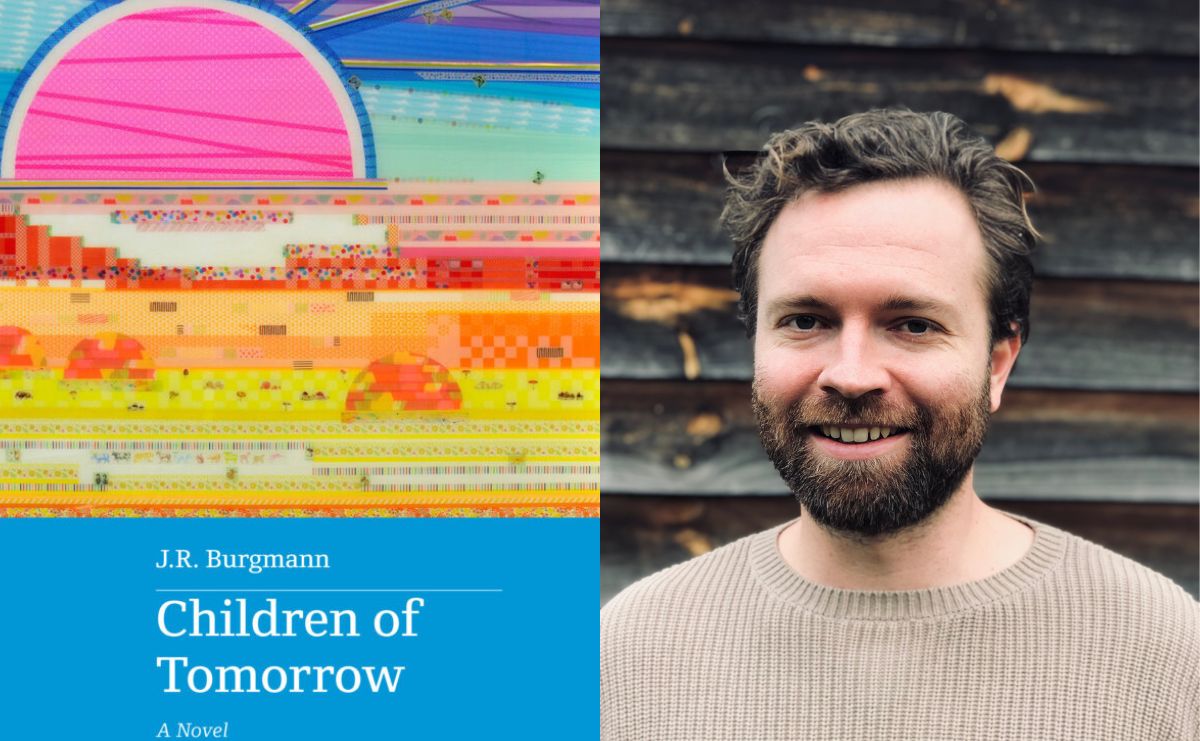JR Burgmann’s masterful debut novel is a speculative climate epic forecasting events across the 21st century. In a book spanning multiple generations, family members each inherit escalating, catastrophic change. It’s also a literary triumph. Every line dazzled and struck me as poetry, and any given page or chapter could easily stand alone. The care and intention with which the work has been crafted is perceivable at every level. Each word, utterance, arc and thematic return is precisely imbued with the essence of the story’s whole.
The book is divided into three parts, Century’s Beginning, Middle and End. The first third begins in 2016. Arne Bakke is camping in Tasmania’s pine forests on a student research trip and learning to read trees – ‘those great columns of planetary history, locking climate’s rising tale in latehood’. By Century’s End, he regards this ‘reading’ as an ‘old hearing’, and the trees as extending beyond human thought and provenance. But in 2016 he’s a long way from this. He wakes to the historic bushfires that devastated ancient flora and 1000-year-old pines beyond repair.
Londoner Evie Weatherall arrives in Melbourne, begins reconnecting with family and making friends, and in time gets together with Arne. She goes ocean diving and is reacquainted with her love for the planet that she also regards as doomed. She dives to help document the loss of the Great Barrier Reef, and believes that interpreting the colouful plume of the coral’s last moments as a message only gives the whole thing more intention and narrative than it deserves.
While reading Children of Tomorrow, I felt I’d travelled into the future and found an account of the past – one that I hope doesn’t eventuate. And hope is explored in this story. Every character embodies it differently. Hope can be futile, protect you from feeling, pacify you from acting and engender you with a resolve to have the things you love ‘survive’. Arne’s supervisor whispers a love note to the pine forests that, from our vantage in 2023, did not make it: ‘I want you all to survive what is coming.’
Jasmine (daughter of Arne and Evie) travels with her own daughter Alloy towards the fabled places of green and regards the new leaves in the dead forests as cruel hope. With a branch as her instrument and the barren coastal sands as her canvas, Alloy draws a map of the universe. She shows her grandfather Arne her depiction of Earth and indicates the places she’d like to travel. He asks her, ‘Why would you want to go out into the world?’ ‘Because I’m going to help it,’ she replies.
Children of Tomorrow also explores family and relationships, and projects how different generations may come to relate to one another. At the outset, Arne and Evie are the children of tomorrow, looking to their future. When they have their own children of tomorrow – Benji, Raph and Jasmine – their relationship to the fate of the world almost tethers to the well-being of their children. They want a safe world for their children, but as the years accelerate with disaster, and as the carbon dioxide parts per million increase with each chapter, so too does their loss and trauma.
Read: Book review: Higher Education, Kira McPherson
As a child, Jasmine asks her dad Arne to tell her about the extinct animals. To her they’re simply mythology, funny and out of sync with her world, and not for her to mourn. But as she ages, she comes to understand them as part of a continuum of extinction in which she is implicated. The augmentations and customisable animal skins that Jasmine wears as fashion echo the way religious symbols can be worn to remember and for protection. For Jasmine, the skins represent what used to be mythology and is now the hideous way of things. Alloy’s generation regard their Millennial grandparents as planet eaters. But young Alloy has also only ever encountered her version of Earth and for her this is ‘only the beginning’.
Climate changes are conveyed on the scale of human experience, and offered as distilled, often heart-breaking detail. My need to process my feelings before moving on meant that I couldn’t always keep up. As a result, I took my time and paused often. Children of Tomorrow captures what it is to live during a time of rapid climate change, where the speed and scale of emergency is out of sync with the pace of humans and our personal orbits. ‘To contemplate it was to stare into an unavailable abyss, and therein … lay the problem all along. The human problem.’
Children of Tomorrow is an essential read. An emotionally heavy one, but with plenty of pay-off. Both along the way – the beautiful prose, the projected new technologies and creativity of human beings when facing the worst – and in the end, with the offer and acknowledgement that, in some form at least, things will continue. ‘Jasmine and Alloy will keep going’.
Children of Tomorrow, JR Burgmann
Publisher: Upswell
ISBN: 978064553695
Pages: 252pp
Publication Date: 7 March 2023
RRP: $29.99





